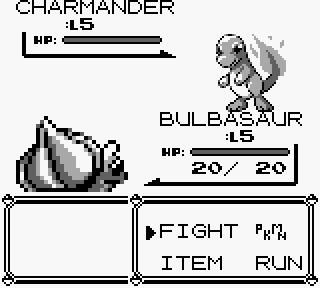Pokemon Blue and Pokemon Red, released in 1996 (1998 in North America) for the Game Boy, were revolutionary titles that introduced millions of players worldwide to the world of Pokemon and laid the foundation for the franchise’s immense success. These games not only defined the Pokemon universe but also established many of the mechanics and features that are still central to the series today.
Gameplay
Pokemon Blue and Pokemon Red are classic RPGs with an emphasis on exploration, collection, and battling. Players take on the role of a young Pokemon Trainer, embarking on a journey to become the Pokemon Champion by capturing, training, and evolving a diverse range of creatures. The ultimate goal is to defeat the eight Gym Leaders to earn Gym Badges, then challenge the Elite Four and the Champion.
The games introduced the basic Pokemon mechanics that are now iconic: capturing Pokemon in Pokeballs, leveling up through battles, and evolving to gain new abilities. The rock-paper-scissors dynamic of Pokemon types—Grass beats Water, Water beats Fire, and Fire beats Grass—was a simple yet strategic element that added depth to the battles.

Features
Trading was a key feature that encouraged players to connect their Game Boy consoles to trade Pokemon, share items, and battle with friends. The need for trades to evolve certain Pokemon (e.g., trading Machoke to evolve into Machamp or trading Poliwag to evolve into Poliwhirl) fostered a sense of community and increased the longevity of the games.
Red/Blue versions also introduced Pokemon Centers and Pokemarts, where players could heal their Pokemon and buy items. The Pokedex—a data collection tool that tracked the Pokemon a player had encountered—became both a gameplay feature and a source of pride as players sought to complete their collection.
Graphics and Sound
The 8-bit graphics of Pokemon Blue and Pokemon Red were basic by modern standards, but they were revolutionary at the time, with an isometric view that allowed for a detailed and interactive world. The sprite designs of the Pokemon were simple yet charming, capturing the personality of each creature despite the limited color palette and resolution.
The music, composed by Junichi Masuda, is iconic. The overworld themes, battle themes, and the Gym Leader’s music are instantly recognizable and evoke nostalgia for players who grew up with these games. The minimalist sound effects—like the distinctive “Pika!” of Pikachu or the evolving sound of a Pokemon—became iconic and are still fondly remembered today.
Legacy
Pokemon Blue and Pokemon Red are credited with starting the Pokemon phenomenon. The games sold millions of copies worldwide and became cultural touchstones, spawning an animated TV series, movies, card games, and numerous spin-offs. They set the stage for the Pokemon franchise to become one of the most successful and enduring media franchises in history.
The games also influenced how RPGs were designed, with their focus on collecting and battling becoming a standard feature in many other titles. The formula of exploring a world, capturing creatures, and battling became a model that many developers followed.

Verdict
Pokemon Blue and Pokemon Red are not just video games; they are icons of gaming history. They introduced a generation to the joys of catching ’em all and created a lasting legacy that continues to shape the gaming industry. Despite their simplicity, the charm of these games lies in their mechanics, the thrill of discovery, and the joy of battling with friends. For many, they represent the very beginning of their Pokemon journey and are still fondly remembered as some of the best games of all time.
Score: 9.5/10
Other relevant posts:
- Mischief Makers – A Shake-Up on the N64
- Conker’s Bad Fur Day: The N64’s Foul-Mouthed Masterpiece
- Banjo-Kazooie – A Magical Adventure
- Spyro the Dragon – A Treasure Worth Collecting
- Star Fox 64 – A Space Odyssey
